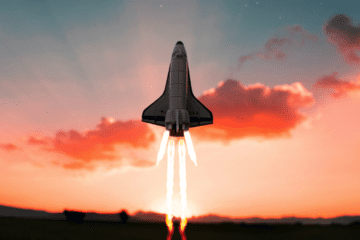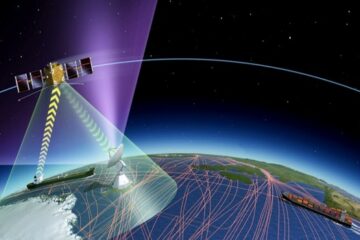Introduction
In recent years, sustainability has acquired growing importance in public space. The space industry has also been impacted by these new stakes and evolved to consider social and environmental issues. With this article, SEDS Bocconi aims to contribute to the discussion by analyzing four aspects representing the current debate around sustainability and space, taking into account the issues, the solutions, and the potential long-term evolutions. Thus, we will investigate the recent emergence of reusable rockets, the risk embodied by the saturation of Low Earth Orbit, the benefits of space for better resource management, and finally, the system enabling to maintain life within space.
Reusable rockets, a low-cost and sustainable technology
The first topic we will evoke is the emergence of reusable rockets which represents a real technological breakthrough transforming the entire launcher industry. This new generation of rockets constitutes a more economical way of transportation and allows us to rethink space exploration toward a more sustainable and long-term oriented model.
Single-stage-to-orbit reusable launch vehicles have existed in science fiction since the early 20th century. In the decades since the first rockets flight, the only launch vehicle that was capable of any reuse was the Space Shuttle. While the orbiter and the solid rocket boosters were recovered, in-depth inspection and refurbishment were required after each flight. Compared to other vehicles, one of the significant advantages of the Shuttle was its ability to launch crew and cargo on the same flight. Today, no other launch vehicle has demonstrated the same versatility and adaptability as the Space Shuttle. However, the program was discontinued in 2011 for economic and safety reasons. NASA has reused its small fleet of space shuttles for decades, but reusable rockets weren’t a reality until SpaceX entered the scene. In December 2015, the company returned a Falcon 9 rocket booster to its landing pad for the first time. Later in 2016, the Falcon 9’s first stage completed the first successful Landing at Sea in SpaceX’s cargo mission launched to the International Space Station. And so, the revolution of rocket launches began with the decreasing CO2 footprint.

Launch cost per kilogram to LEO
Reusable parts drastically lowered launch costs and barriers to space access. NASA has calculated that commercial launch costs to the International Stations have been reduced by 4 over the last 20 years. In 2006, the Russian Soyuz rocket cost NASA roughly $71 million per launch.
Sustainability also signifies reusability. In the long-term, reusability is expected to reduce prices more and increase the number of launches. The impact of rockets, in general, has been challenging to quantify because they are not launched very often and primarily operate in space. To quantify the footprint difference between reusable and non-reusable launchers, a case study was conducted in which a non-reusable Falcon 9 and a reusable Falcon Heavy were compared. The study reviewed each rocket’s environmental, economic, and societal impact. The comparative analysis estimated that the reusable Falcon Heavy reduced costs by 65% and global warming potential by 64%.
Following this first part concerning the emergence of this new generation of launchers, we will focus our attention on a critical stake for the long-term development of space: space debris. As space is a collective good for humanity, we should ensure sustainable access for future generations. The current saturation of Low Earth’s Orbits by artificial objects is at the core of the risk described by the Kessler syndrome!
Kessler syndrome, a severe risk the humanity
The Kessler syndrome is a scenario in which the density of objects in low Earth orbit (LEO) due to space pollution is high enough that collisions between objects could cause a cascade in which each collision generates space debris that increases the likelihood of further collisions. In other words, the situation will be such that any attempt to achieve a growth-free small debris environment by eliminating sources of past debris will likely fail because fragments from future collisions will be generated faster than atmospheric drag will remove them. The theoretical cascading Kessler syndrome becomes more likely as satellites in orbit increase. As of 2021, more than 4550 satellites are orbiting the Earth, and it is estimated that there are 650,000 pieces of space junk.
The reason why such a scenario implicates “space sustainability” can be understood by the guidelines set by the United Nations Committee on the Peaceful Uses of Outer Space for the “long-term sustainability of outer space activities” that would ensure: “[…] the ability to maintain the conduct of space activities indefinitely into the future in a manner that realizes the objectives of equitable access to the benefits of the exploration and use of outer space for peaceful purposes, to meet the needs of the present generations while preserving the outer space environment for future generations.”
Representation of the artificial objects currently in orbit around Earth

We can notably review two of the most detrimental events for the sustainability of low Earth orbit that have occurred in recent years. First, a US commercial satellite crashed with a Russian military satellite in 2009, which produced a tremendous amount of debris. Second, there is Project West Ford, or Project Needles, a US military project in the 70’s whose purpose was to facilitate radio communications by placing a ring of 480,000,000 mini needles into the ionosphere. This operation resulted in a failure generating unnecessary pollution of low Earth orbit.
Lastly, we can evoke a fascinating modern achievement of technology that could be used as predecessor technology for space debris removal. DART is a mission that was launched in October 2021 and completed this year. It aimed at deflecting and removing an asteroid from its orbit.
After analyzing the potential issues that may affect sustainable access to space, we will now view how space can become a powerful vector enabling a more sustainable usage of resources. We will get through this topic using the most recent developments in the sector. We will then study two pioneer initiatives: the Kaleshwaram lift irrigation project in India and the North Water Transfer project in China.
Space, a powerful tool for a better water management
To monitor terrestrial water resources, several space agencies have developed satellites that provide various types of data about water and its related metrics. The first ever satellites designed for this purpose were the ERS 1 & 2. They were launched by the European Space Agency in 1991 and 1995 with the capabilities to locate crucial rivers and water bodies and measure related variables like soil wetness and precipitation, which become essential to flood forecasting and monitoring the balance of global river basins.

Kaleshwaram lift irrigation project on Godaravi in India
Water is used in every aspect of human life. Agriculture is the most intensive, using 70% of global freshwater. At the same time, industrial usage in manufacturing and fabrication comes in second, using 19%, and finally, domestic uses take up the remaining 11% of fresh water. However, water is not always accessible for such benefits and must be transported across vast land areas and turbulent geography, which would be impossible without satellite data. The Kaleshwaram and South to North Water Transfer perfectly illustrate how satellites help to cope with the water access problem.
Firstly, the Kaleshwaram lift irrigation project being developed in India is meant to pull water out of a river on the lowlands, transport it uphill, where it will be released, and flow down using gravity to irrigate land and increase soil fertility for agriculture. This initiative has propelled millions of farmers into the lower middle-class segment. It has increased the region’s agricultural output from around 5 million to over 7 million tons of products with only partial completion of the project.
Second, the Chinese South to North Water Transfer project represents the most ambitious initiative in the world to control the water supply. The south of China is incredibly wet but has a low population, whereas most industrialized Chinese cities lay in the far more arid north, where water scarcity is an issue. The government has spent over $60 Billion on this project, aiming to transfer 44.8 billion cubic meters of fresh water annually. This water is meant to support agriculture, industrial and domestic use in northern China. These impressive water transfer projects would be impossible without the data provided by the satellites like the ERS 1 & 2.
Despite being a precious asset for the sustainable management of resources on Earth, space also represents a challenging environment for astronauts. To fulfill their vital needs, humans have developed Space Astronaut Support Systems allowing for sustainable access to space. These key technologies have then been adapted for civilian application on Earth!
In Space Astronaut Support Systems, the key to survive
Earth’s natural life support system provides astronauts with air, water, and all the conditions that make life possible. The Environmental Control and Life Support System (ECLSS) aims to provide clean air and water to the ISS crew, which it achieves through two key components: the WRS and the OGS.
The Water Recovery System (WRS) produces clean water by recycling crewmember urine and cabin humidity condensate. WRS is composed of the Urine Processor Assembly and the Water Processor Assembly. The water produced must meet purity standards before it can be utilized aa and thanks to this technology, about 90% of the water on the station can be recycled. Next is the Oxygen Generation System (OGS), which produces oxygen for breathing air and replaces oxygen used during experiments or airlock depressurization. The OGS comprises the Oxygen Generation Assembly (OGA) and a Power Supply Module.
The biomass production chamber

This mechanism is completed by the Microbial Check Valve (MCV) technology, adapted to the ISS to purify the water produced by the WRS. The commercial rights of the MCV were sold to the Water Security Corporation, which used this technology to eliminate bacteria and viruses contaminating terrestrial water. Today, over 1 billion people do not have access to uncontaminated water, and over 10 million die from waterborne illnesses every year. The Water Security Corporation created the so-called “Survival bags” used in Mexico, Iraq, Dominican Republic, Pakistan, and Malaysia.
Finally, another critical space station equipment is the BLSS (Bioregenerative Life Support System), an ECLSS aiming to mimic the natural environment by utilizing biological elements like microalgae, plants, and bacteria. It seeks to create greenhouses to allow the ISS crew independence in food production. BLSS technology is tested in the BPC (Biomass Production Chamber) and the Prototype Lunar Greenhouse testing facilities. BPC is located at Kennedy Space Center and specializes in studying and producing crops without gravity to reproduce the process in space. The results of the latest experiences performed by the company were promising. The facility has allowed the production of 5 crops of wheat (64-86 days each), 3 crops of soybean (90 to 97 days), 5 crops of lettuce (28-30 days), and 4 crops of potato (90 to 105 days). The Lunar Greenhouse testing facility has a plant growth chamber to provide a vegetarian diet to astronauts.
By Charvak Thatha, Chiara Nespoli, Margarita Kuptsova and Dimitris Karagaslis
Sources:
Bushnell, D.M., and Moses, R.W. (2018) Commercial Space In The Age Of “New Space”, Reusable Rockets and The Ongoing Tech Revolutions, NASA. Available at: https://ntrs.nasa.gov/api/citations/20180008444/downloads/20180008444.pdf (Accessed: November 9, 2022).
ESA (2007) Space Technology put into service for Global Water Resources Observations, ESA. Available at: https://www.esa.int/Applications/Observing_the_Earth/Space_technology_put_into_service_for_global_water_resources_observations (Accessed: November 9, 2022).
George C. Marshall Space Flight Center (2017) Environmental Control and Life Support System (ECLSS), NASA. Available at: https://www.nasa.gov/sites/default/files/atoms/files/g-281237_eclss_0.pdf (Accessed: November 9, 2022).
Lag, S. (2022) Reusable rockets: revolutionizing access to outer space, DNV. Available at: https://www.dnv.com/to2030/technology/reusable-rockets-revolutionizing-access-to-outer-space. Html (Accessed: November 9, 2022).
OECD, Earth’s Orbits at Risk: The Economics of Space Sustainability, OECD iLibrary. Available at: https://www.oecd-ilibrary.org/sites/16543990-en/1/3/1/index.html?itemId=%2Fcontent%2Fpublication%2F16+543990-en&_csp_=854a4bce42a0a0ccab7782305a6fe7d7&itemIGO=oecd&itemContentType=book#chapter-d1e393 (Accessed: November 9, 2022).
Russell, K. (2018) Calculating the economics of reusable launch vehicles, May 2018 – Calculating the Economics of Reusable Launch Vehicles | Via Satellite. Available at: https://interactive.satellitetoday.com/via/may-2018/calculating-the-economics-of-reusable-launch-vehicles/ (Accessed: November 9, 2022).
Torres, A. (2020) Reusable Rockets and the Environment, UC Merced Undergraduate Research Journal. Available at: https://escholarship.org/content/qt1v52510j/qt1v52510j.pdf (Accessed: November 9, 2022).
University of Arizona (2009) The University of Arizona, UA-CEAC prototype Lunar Greenhouse : Home. Available at: https://www.ag.arizona.edu/lunargreenhouse/ (Accessed: November 9, 2022).
Wheeler, R.M. et al. (1996) NASA’s biomass production chamber: A testbed for bioregenerative life support studies, Science Direct. Elsevier. Available at: https://www.sciencedirect.com/science/article/abs/pii/027311779500880N (Accessed: November 9, 2022).
Williams, M.S. (2022) Taking Earth with us: Is space exploration “sustainable”?, Interesting Engineering. Interesting Engineering. Available at: https://interestingengineering.com/science/space-exploration-sustainable (Accessed: November 9, 2022).
Yue, W. (2020) South-North Water Transfer Project not sustainable, says Chinese official, China Dialogue. Available at: https://chinadialogue.net/en/cities/6737-south-north-water-transfer-project-not-sustainable-says-chinese-official/ (Accessed: November 9, 2022).



0 Comments